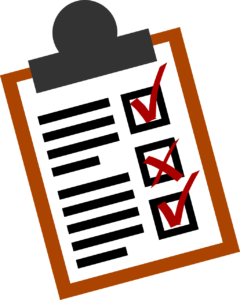Questionnaire
In this method a questionnaire is sent (mailed) to the concerned respondents who are expected to read, understand and reply on their own and return the questionnaire. It consists of a number of questions printed on typed in a definite order on a form on set of forms.
It is advisable to conduct a `Pilot study’ which is the rehearsal of the main survey by experts for testing the questionnaire for weaknesses of the questions and techniques used.
Main aspects of the Questionnaire –
1.General form – It can be structured or unstructured. Structured questionnaires are those in which there are definite, concrete and pre-determined questions. The form of questions may be closed, open or multiple choice questions. In an unstructured questionnaire all these characteristics are missing, the interviewer is given a guide on the type of info to be obtained and the formulation of questions is done by his own experience and the replies are taken down in respondents own words.
2.Question sequence – A proper sequence of questions reduces the chance of individual questions being misunderstood. To make the questionnaire effective the question – sequence must be clean and smoothly moving (the relation of one question to another should be readily apparent). The opening question should be such as to erose human interest. Questions relating to personal wealth or character, or questions putting strain on the memory of the respondent should be avoided at first.The question sequence must conform to the respondents’ way of thinking. It should go from general to more specific or from easy to answer to the toughest.
3.Question formulation and working – All questions should meet the following standards –
-Should be easily understood
-Should be simple
-Should be concrete
-Should be impartial
-Should conform to the respondents way of thinking
Concerning the form of questions, they can be of three types –
-Open-end questions – where the respondent has to answer subjectively in his own words.
-Closed questions – `Yes’ and `No’ type questions.
-Multiple choice questions – the respondents have to choose one of the alternative answers put to him.
Open end questions permit a free response while a multiple choice question provides alternative replies and may force out an opinion even when the respondent in fact does not have an opinion.
Proper attention to the workings of questions must be given. Simple words, familiar to the respondent must be employed and words with ambiguous meanings must be avoided. Similarly, danger words, catchy words or words with emotional connotations must be avoided.
Essentials of a good questionnaire –
–It should be short and simple
–Questions should proceed in a logical sequence
–Technical terms and vague expressions must be avoided.
–Control questions to check the reliability of the respondent must be present
–Adequate space for answers must be provided
–Brief directions with regard to filling up of questionnaire must be provided.
–The physical appearances – quality of paper, colour etc must be good to attract the attention of the respondent.
Advantages –
⦁ Free from bias of interviewer
⦁ Respondents have adequate time to give
⦁ Respondents have adequate time to give answers
⦁ Respondents are easily and conveniently approachable
⦁ Large samples can be used to be more reliable
Limitations –
⦁ Low rate of return of duly filled questionnaire
⦁ Control over questions is lost once it is sent
⦁ It is inflexible once sent
⦁ Possibility of ambiguous or omission of replies
⦁ Time taking and slow process
You Might Also Want To Read :Collection of Primary and Secondary Data, Other Methods of Data Collection
